Video games dominated Kickstarter last year, with over $83 million pledged to games-related projects, according to the year-end report the company released early this month. And out of the 16 blockbuster campaigns — those that raised more than $1 million — seven of them were for new games.
That’s no small accomplishment for the industry, but it also shows that video games are ripe for crowdfunding efforts. A lot of factors contribute to success on Kickstarter. So what made these seven projects — Star Citizen, Double Fine Adventure, Wasteland 2, Shadowrun Returns, Planetary Annihilation, Homestuck Adventure, and Project Eternity — such breakaway hits? (The role-playing game Project Eternity earned the most with close to $4 million, and that’s not even counting campaigns for hardware like the Android-based Ouya, which brought in over $8 million.) We spoke to the proud developers and a professor at The Wharton School of Business at the University of Pennsylvania to find out.
The right ‘ingredients’ for success
What makes a good Kickstarter? Professor Ethan Mollick, who coauthored the book Changing the Game: How Video Games Are Transforming the Future of Business, told GamesBeat in a phone interview that the most successful projects are run by people with established backgrounds, which leads to success in two key ways.
“It builds a social network of fans, which helps a lot,” he said. “And second, it invites credibility.”
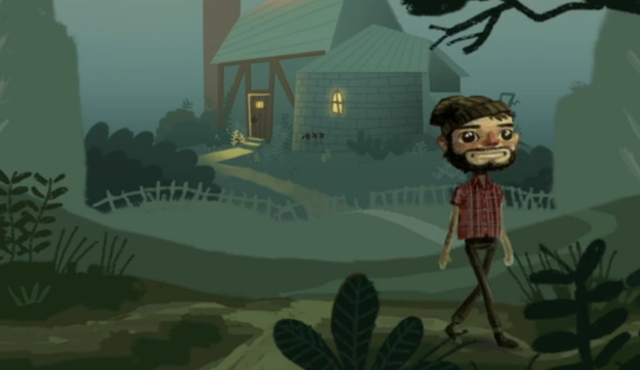 Virtually all of the developers behind last year’s highest-earning Kickstarter games are already well known in the industry. Jordan Weisman, the creator of Shadowrun, returned for Shadowrun Returns — one of the reasons Harebrained Schemes studio founder Mitch Gitelman gave us for the campaign’s success.
Virtually all of the developers behind last year’s highest-earning Kickstarter games are already well known in the industry. Jordan Weisman, the creator of Shadowrun, returned for Shadowrun Returns — one of the reasons Harebrained Schemes studio founder Mitch Gitelman gave us for the campaign’s success.
And Tim Schafer of Double Fine Productions found an audience for his campaign by way of his other acclaimed games, like Psychonauts and Grim Fandango. Double Fine Adventure raked in a generous $3.3 million when the asking price was only $400,000.
“I think the success of our project can be attributed to a perfect explosion of good timing, a rabid fan base, and the fact that adventure games are a genre that fans have wanted us to revisit for a long time,” Double Fine producer Greg Rice told GamesBeat.
Mollick explained that the best projects use preparatory material to demonstrate what the developers are going to do and how they’re going to accomplish it. The studios put together established teams, acquire outside endorsements, and know how to use social media effectively — all easier to do when people already know your name and your credentials. That gets you faster and more widespread press coverage, too.
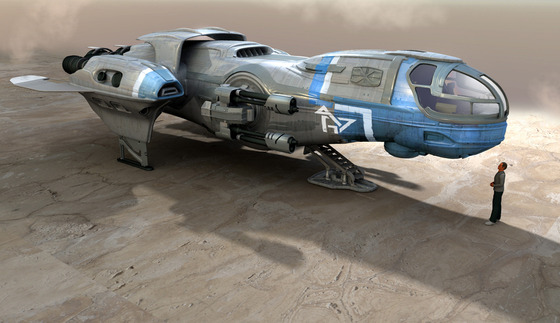 Chris Roberts (the creator of the Wing Commander space-flight simulator series) and his team at Cloud Imperium Games took their task seriously, treating crowdfunding like a product launch and promoting the game even before it hit Kickstarter.
Chris Roberts (the creator of the Wing Commander space-flight simulator series) and his team at Cloud Imperium Games took their task seriously, treating crowdfunding like a product launch and promoting the game even before it hit Kickstarter.
“For Star Citizen, I knew I had to raise a significant amount of money as a minimum — $2 million — a higher hurdle than any other crowdfunded game at the time,” he told GamesBeat. “Because of this, I decided that despite having a well-known ‘brand’ in space sims, I needed to go beyond nostalgia and reputation and show people what the game would look and play like.”
Roberts spent a year building a prototype and doing research so he could deliver on his pitch. Cloud Imperium even launched a teaser site a month before the campaign’s launch to spread news of the game virally.
“Over 30,000 people had signed up and were interacting on our forums before we even announced Star Citizen,” he said.
Kickstarters engage three core groups and follow predictable patterns
The best Kickstarters appeal to three populations of people, according to Mollick. They are patrons, who give money because they want a campaign to succeed; customers, who use Kickstarter as a preorder system and purchase low-end rewards packages; and investors, who want to be a part of what’s happening and tend to buy higher-end packages.
Psychologically, the interests of patrons and investors overlap — they want to feel like they’re a part of what’s happening.
 “I think you see the most successful projects engage all three of those [groups] with different sets of packages,” said Mollick, although he wasn’t able to specify whether physical or digital rewards (or a combination of both) mattered more.
“I think you see the most successful projects engage all three of those [groups] with different sets of packages,” said Mollick, although he wasn’t able to specify whether physical or digital rewards (or a combination of both) mattered more.
“I think what you see here is generally a lot of realism from these folks also,” he said, mentioning that over 75 percent of Kickstarter projects deliver late (85 percent for large projects). “Their delivery times are quite far out.”
Most Kickstarters tend to succeed by small margins and fail by large margins, according to an article that Mollick contributed to on Appsblogger.com. And campaign length and goal size matter, too — you have a better chance for success when operating within a 30-day time period and setting a realistic funding goal. Most of these seven projects fell in that category, lasting for about a month and far exceeding their minimum financial needs.
Video games are a good fit
Video game Kickstarters have two main advantages working in their favor, according to Mollick: The existing, broken funding model through traditional publishers, and the capability to handle preorders cheaply.
 With a product like the Pebble watch, he said, the company might lose money on each copy itself. But for games like Double Fine Adventure, each copy sold doesn’t cost anything aside from a potential future sale, so developers can feel more comfortable moving some of that cost up to fund development.
With a product like the Pebble watch, he said, the company might lose money on each copy itself. But for games like Double Fine Adventure, each copy sold doesn’t cost anything aside from a potential future sale, so developers can feel more comfortable moving some of that cost up to fund development.
Why else do video game Kickstarters do so well? Community plays a big role.
“Games invoke a lot of passion, just like music and other entertainment,” said Mollick. “So you want to help your favorite artist produce something you love, and especially something pure, and Kickstarter lets them do that.”
He also pointed out that these seven projects were almost all sequels of some sort — like Shadowrun Returns. They don’t all necessarily have the same name attached, but known developers are involved and the audiences for them already exist, so these successes aren’t surprising.
Key advice: Shape your campaign around the community
The developers behind last year’s biggest game projects shared a few of their mistakes and tips for those looking to launch new campaigns in 2013.
Rice stressed the importance of interacting and communicating with the people who will be playing your games.
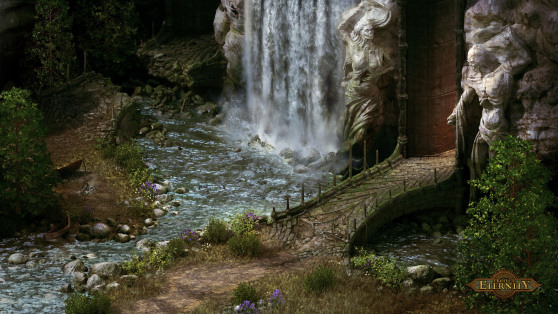 “My advice to all future Kickstarter projects is to try and think like a fan,” he said. “Figure out what story you’re trying to tell with your project, why a fan should be excited about that, and what kind of things a fan would expect from you. After that, it’s all about being very clear and concise with messaging, having a direct and open line of communication, and coming up with a reward structure that is enticing but won’t break the bank.”
“My advice to all future Kickstarter projects is to try and think like a fan,” he said. “Figure out what story you’re trying to tell with your project, why a fan should be excited about that, and what kind of things a fan would expect from you. After that, it’s all about being very clear and concise with messaging, having a direct and open line of communication, and coming up with a reward structure that is enticing but won’t break the bank.”
Adam Brennecke — one of the directors on Obsidian Entertainment’s Project Eternity, which hit its target goal in a day — told us that the best advice is to be adaptive to how your campaign is progressing.
“Back a few projects and get a feel for how crowdfunding works,” he said. “Take a close look at projects that get funded and try to figure out why they get funded. Look at successful projects and read their updates. Kickstarter is a great place to test the waters with your idea. If it doesn’t work out, you can always come back with a revised plan without any real risk to you or your backers.”
Mistakes happen: Here’s what you can learn going forward
“Your time is limited,” said Marc Scattergood, a producer on Uber Entertainment’s Planetary Annihilation project. Use it wisely.
“Unless you’re already famous, the most important thing is convince people how awesome your concept is,” he said. “Show the game or the product you’re envisioning, and show it quickly. Then talk about the team and all the extra things that will guarantee its success.
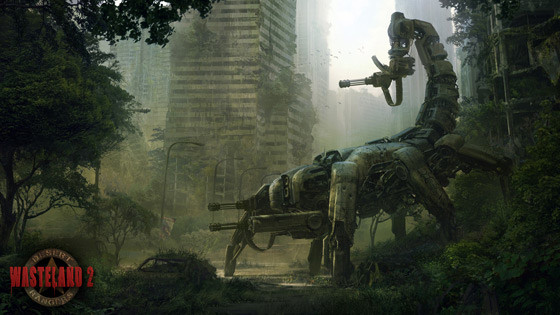 “It’s not done till you run out of time. Keep releasing updates, keep building momentum, and don’t let a single day go where you’re not talking to your community, developing new content and updates to release, and getting people excited.”
“It’s not done till you run out of time. Keep releasing updates, keep building momentum, and don’t let a single day go where you’re not talking to your community, developing new content and updates to release, and getting people excited.”
In a press world that’s increasingly burned out on Kickstarters, said Brian Fargo of inXile Entertainment’s Wasteland 2, finding ways to gain support is more crucial than ever.
“You have to do work on the front end to create awareness and understand your audience before launching,” he said, adding that without the press, “it is very hard to [get funding] unless you have some kind of built-in audience.”
Fargo described “the only drama” he experienced during the campaign: “In my excitement, I used the word ‘social,’ which had negative connotations to Facebook and the new breed of game,” he said. That’s not a word you want to throw around with core gamers.
“I quickly found out that ‘social’ is a four-letter word with two extra letters and had to explain my use of the term,” he said. “The main point with that was that I stayed tuned in with the audience every moment of the campaign to make sure our message didn’t get confused.”
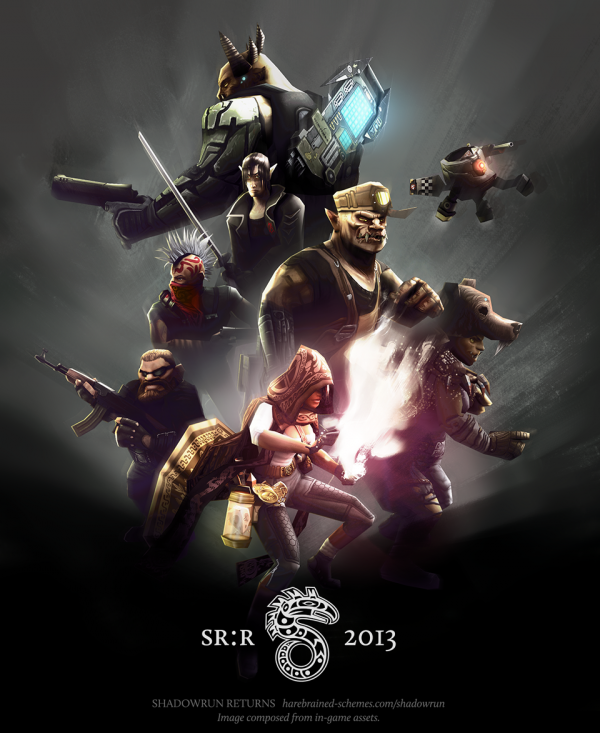 Developers must spend time analyzing the full scope of costs as well, said Mitch Gitelman, who informed us that Shadowrun Returns is now open for preorders.
Developers must spend time analyzing the full scope of costs as well, said Mitch Gitelman, who informed us that Shadowrun Returns is now open for preorders.
“Make sure you understand all your costs when planning your campaign and creating your reward tiers,” he said. “In addition to the cost of any physical goods you’re using for rewards, don’t forget to include the cost of picking, packing, and shipping. Depending on the state you’re in, you may be responsible for taxes on the pledges you collect, and you’d better plan for it because when Uncle Sam holds out his hand, he expects to be paid.”
Shadowrun Returns reached its funding goal after 28 hours, which caused Gitelman and his team to get a little too excited. They released a quick follow-up video in response, mentioning the possible addition of multiplayer and cooperative modes.
“The level of excitement in the community went through the roof at the thought,” said Gitelman, “but we quickly realized that adding these additional modes was a bridge too far and would heavily distract from the single-player game we had envisioned.”
The solution? Harebrained Schemes posted a written update saying that, after a bit of thinking, it had decided those features were “beyond the scope of the project and would cause us to lose focus on the game you reacted to so positively (and the game we really want to make).”
“Backers — and potential backers — told us that this statement increased our credibility because it was transparent, direct communication and showed that we were professional game developers who knew how to focus their project,” said Gitelman.
‘Crowdfunding is a full-time job’
“People need to see something tangible — not just on launch but during the campaign,” said Roberts.
“Even with Star Citizen, where I prepared for a full year, I felt like I didn’t have enough content to share during the campaign,” he said. “If you keep your community engaged, checking in for updates and new cool stuff to see, they are more likely to tell you ways you can improve your campaign and connect with an even wider base.”
The start of the campaign was rough for Cloud Imperium. Roberts recalled how the servers for its dedicated community site, which also acted as a secondary crowdfunding platform, crashed for four days because too many people were trying to back the project.
“Today’s world has a very short attention span, and there was no doubt that we missed out capturing some backers due to the difficulties on our site,” he said. “We reengineered our site to be more robust and also added Kickstarter as an additional option for potential backers. Then we just put our heads down and worked doubly hard to provide updates and engage with the community.”
Because of the extra effort, Roberts feels that the team managed to make up for their losses by the end of the campaign.
“Maybe the biggest factor in our success was that we actively listened and tailored the campaign based on the feedback we got from our community,” he said. “Launching on Kickstarter, a lot of the additional tiers and add-ons that helped drive our fundraising total up came directly from suggestions made by our community. If your community feels like you are listening to them they back the project with incredible passion.”
VentureBeat's mission is to be a digital town square for technical decision-makers to gain knowledge about transformative enterprise technology and transact. Learn More


